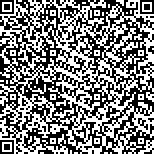| 李 强,窦文广,李 正.计算机断层扫描图像放射组学分析鉴别诊断磨玻璃密度肺腺癌的浸润性[J].肿瘤学杂志,2021,27(1):47-52. |
| 计算机断层扫描图像放射组学分析鉴别诊断磨玻璃密度肺腺癌的浸润性 |
| CT Radiomic Features of Part-solid Ground-glass Nodules in Differentiation Between Invasive and Non-invasive Pulmonary Adenocarcinomas |
| 投稿时间:2020-05-11 |
| DOI:10.11735/j.issn.1671-170X.2021.01.B010 |
|
 |
| 中文关键词: 放射组学 肺腺癌 计算机断层摄影 磨玻璃结节 |
| 英文关键词:radiomics pulmonary adenocarcinoma computed tomography ground-glass nodules |
| 基金项目:河南省科学技术厅课题项目(182102310494) |
|
| 摘要点击次数: 1220 |
| 全文下载次数: 372 |
| 中文摘要: |
| 摘 要:[目的] 通过放射组学分析方法研究鉴别在计算机断层扫描(computed tomography,CT)图像中表现为亚实性磨玻璃结节(ground-glass nodules,GGNs),是属于侵袭性肺腺癌(invasive pulmonary adenocarcinomas,IPAs)或非IPA,并结合传统CT图像定性特征与其他临床特征制定诊断IPA诺模图模型。[方法] 回顾性收集2015年2月至2019年4月在新乡医学院第一附属医院进行手术确诊的88例患者,共计100个亚实性结节(56 个IPA和44个非IPA)。选取增强CT动脉期图像进行3D结节感兴趣区的分割并计算定量放射组学特征。使用逻辑回归分析将一组常规临床风险因素和放射医生视觉评估的定性CT成像特征与放射学特征进行比较。建立3种诊断模型,即使用临床风险因素和CT定性特征的基础模型,使用包含具有统计学意义的放射组学特征模型,以及结合所有重要特征的诺模图模型,并根据接受者操作特性曲线(receiver operating characteristic curve,ROC)对三种模型的诊断效能分别进行比较。[结果] 除了3个视觉评估的CT定性成像特征外,还发现从数百个放射学特征中选择的另外三个定量特征(P<0.05)与诊断IPA显著性相关。ROC曲线下面积(area under the curve,AUC)的显示采用诊断诺模图模型区分IPA与非IPA的性能最佳(AUC=0.903),均高于基础模型(AUC=0.853,P=0.0009)或放射组学模型(AUC=0.769,P<0.0001)。决策曲线分析也表明在临床诊断中使用此诺模图模型的潜在益处。[结论] 除临床评估的CT图像定性特征外,定量放射学特征为鉴别IPA和非IPA提供了有效帮助,基于以上两类重要特征的诊断列线图模型在临床上可用于术前决策。 |
| 英文摘要: |
| Abstract:[Objective] To differentiate the invasive pulmonary adenocarcinomas(IPAs) from non-IPAs by CT radiomic imaging features of part-solid ground-glass nodules(GGNs). [Methods] The clinical data and imaging findings of 88 patients with pulmonary pulmonary adenocarcinoma presenting as part-solid GGNs(56 IPA and 44 non IPA) confirmed by operation in our hospital from February 2015 to April 2019 were retrospectively analyzed. Quantitative radiomic features were computed automatically on 3D nodule volume segmented from arterial-phase contrast-enhanced CT images. A set of regular risk factors and visually-assessed qualitative CT imaging features were compared with the radiomic features using logistic regression analysis. Three diagnostic models,i.e.,a basis model using the clinical factors and qualitative CT features,a radiomics model using significant radiomic features,and a nomogram model combining all significant features,were established and compared with receiver operating characteristic(ROC) curves. [Results] In addition to three visually-assessed qualitative imaging features,another three quantitative features selected from hundreds of radiomic features were found to be significantly(all P<0.05) associated with IPAs. The diagnostic nomogram model showed a significantly higher performance [area under the ROC curve(AUC) =0.903] in differentiating IPAs from non-IPAs than either the basis model(AUC=0.853,P=0.0009) or the radiomics model(AUC=0.769,P<0.0001). Decision curve analysis indicated a potential benefit of using such a nomogram model in clinical diagnosis. [Conclusion] Quantitative radiomic features of GGNs provide additional information over clinically-assessed qualitative features for differentiating IPAs from non-IPAs,and a diagnostic nomogram model including all these significant features may be clinically useful in preoperative strategy planning. |
|
在线阅读
查看全文 查看/发表评论 下载PDF阅读器 |